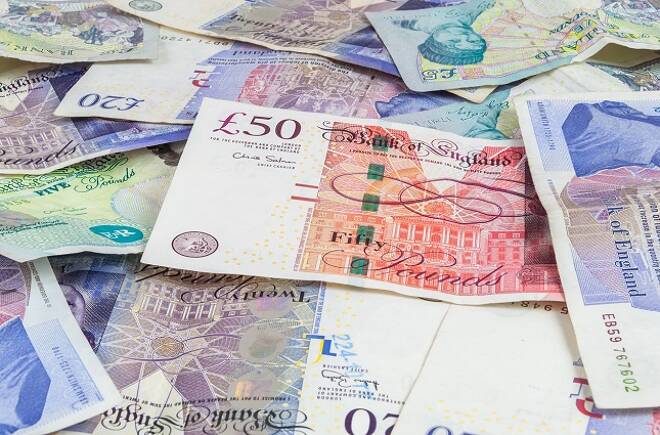Advertisement
Advertisement
EUR/USD Daily Technical Analysis for June 14, 2017
By:
The EUR/USD consolidated in a tight trading range ahead of Wednesday’s Fed meeting where the FOMC is widely expected to keep rates unchanged. This
The EUR/USD consolidated in a tight trading range ahead of Wednesday’s Fed meeting where the FOMC is widely expected to keep rates unchanged. This follows the ECB meeting last week, were the central banks removed its easing bias. German investor sentiment unexpectedly declined in May, while inflation in Spain and the United States came in slightly warmer than expected.
Technicals
The EUR/USD formed another doji day where the open and the close were at the same level. The range was very tight as traders await the Fed decision. The exchange rate is capped by resistance near the 10-day moving average at 1.1230. Additional resistance is seen near last week’s highs at 1.1285. Support on the currency pair is seen near the May 29 lows at 1.1109. Momentum is negative as the MACD (moving average convergence divergence) index prints in the red with a downward sloping trajectory which points to a lower exchange rate for the EUR/USD. The RSI (relative strength index) is moving in a horizontal line, printing a reading of 57, which is in the middle of the neutral range and reflects consolidation.
German Investors Confidence Dropped Unexpectedly
German ZEW investor confidence unexpectedly declined to 18.6 from 20.6 in the previous month. Expectations had been for a renewed improvement so this is somewhat of a disappointment although the current conditions indicator came in higher than expected. The expectations index meanwhile still suggests that optimists outnumber pessimists and the overall Eurozone index still improved, to a high 37.7 from 35.1 in May.
Differing Views on Monetary Policy
Germany’s Schaueble calls for end to “ultra loose” monetary policy. The German Finance Minister said it’s not easy for the ECB, but added that unconventional monetary policy had supported “undue risk taking, policy complacency, capital misallocation and asset-price bubbles and will continue to do so if it is not reversed in time”. He stressed that “we need to exit current monetary policy in a timely manner and return to a more normal curve”. Schaeuble softened the demands by saying that it remains harder for the ECB to react among the challenges of “a very difficult construction of the monetary union”. Still, the pressure from a politician on the ECB won’t go down too well.
The ECB’s Liikanen said that the economy still needs substantial degree of stimulus. The Governing Council member said that while monetary policy underpinned growth and employment, the recovery is “not yet sufficiently strong to raise euro-area inflation in line with the monetary policy objective. This means the “ECB will need to continue to pursue a very substantial degree of monetary accommodation to secure a sustained return of inflation rates toward levels that are below, but close to 2%.”
Spanish Inflation was Confirmed at 2%
Spanish HICP inflation was confirmed at 2.0% year over year, in line with the preliminary number and down from 2.6% year over year in the previous month. Core inflation fell back to 1.0% year over year, after jumping to 1.2% year over year in April, from 0.9% in March. The effect of the later timing of Easter this year drove the sharp swings over the past three months, like in the rest of the Eurozone. Still, while the headline rate dropped back again in May it remains at the upper end of the ECB’s definition for price stability and far above the Eurozone average.
U.S. Chain Store Sales Rebounded in Latest Week
U.S. chain store sales rebounded 1.1% in the week ended June 10. But compared to last year, sales slowed to a 0.5% year over year pace versus 1.2% year over year which was the fastest since the April 29 week. Seasonally cool temperatures versus the same week in 2016 contributed to the slowdown. However, grocery sales remain solid and last week saw the highest percentage of total spending since October 2013.
PPI Came in Slightly Hotter than Expected on the Core Rate
U.S. PPI was unchanged in May, while the core rate increased 0.3%. There were no revisions to April’s 0.5% headline jump and the 0.7% surge in the ex-food and energy component. On an annual basis, PPI slowed to 2.4% year over year compared to 2.5% year over year for April. But the core rate rose to 2.1% year over year versus 1.9% year over year. Goods prices declined 0.5% on the month, versus the prior 0.5% rise, with energy tumbling 3.0% and food costs dipping 0.2%. Services prices rose 0.3% following the 0.4% April gain, with trade prices climbing 1.1% and transportation/warehousing costs falling 0.5%.
About the Author
David Beckerauthor
David Becker focuses his attention on various consulting and portfolio management activities at Fortuity LLC, where he currently provides oversight for a multimillion-dollar portfolio consisting of commodities, debt, equities, real estate, and more.
Latest news and analysis
Advertisement
